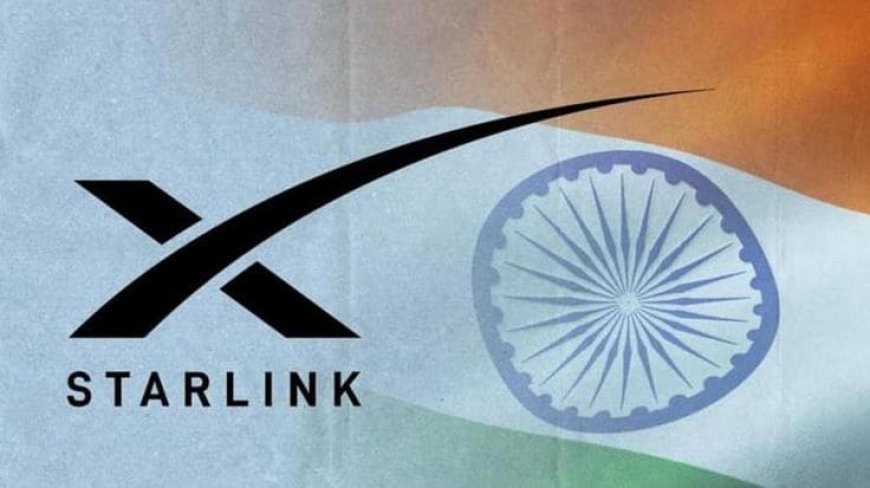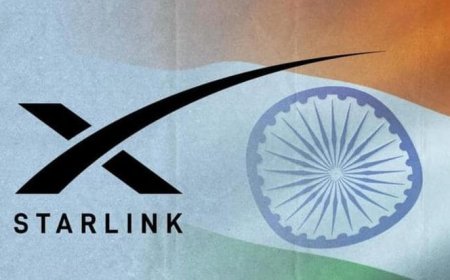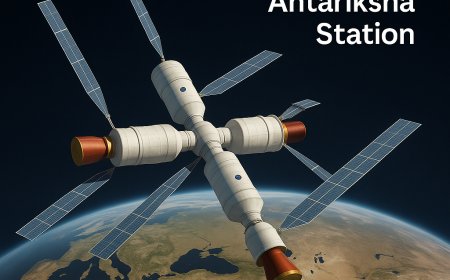Starlink’s India Debut: How Elon Musk’s Satellite Internet Will Transform Digital Access in 2025

India stands on the brink of a digital revolution. And this time, it’s happening not through cables or fiber optics - but from space. Elon Musk’s ambitious satellite internet project, Starlink, is all set to make its grand entry into the Indian market. With its launch expected within the next 12 months, this move could dramatically improve how Indians connect, especially in areas still struggling with weak or no internet access.
Let’s take a closer look at what Starlink's entry means for India and why it’s a big deal for the country's digital growth story.
A Major Milestone: Regulatory Nod Clears the Path
The journey to any market begins with government approvals, and Starlink just crossed one of the biggest hurdles in India. The Department of Telecommunications (DoT) has issued a Letter of Intent (LoI), signaling a green light for Starlink to start preparing for commercial operations in the country.
This approval allows the company to move forward with laying the groundwork for its service rollout. If all goes smoothly, operations could kick off later this year or in early 2026.
Bandwidth and Coverage: Connecting the Unconnected
Starlink won’t just be another internet service provider—it’s coming in with serious firepower. In its initial launch phase, the company plans to offer 600–700 Gbps of bandwidth. That’s enough to serve around 30,000 to 50,000 users in urban areas.
But the real excitement lies in the future. By 2027, Starlink aims to expand its capacity to 3 Terabits per second (Tbps), vastly increasing its ability to provide coverage across India. From bustling cities to remote villages tucked in the hills, the goal is simple: internet for everyone, everywhere.
This is particularly critical for regions where traditional broadband has either failed to reach or has proven too unreliable. Starlink could fill that gap with high-speed satellite internet that doesn’t depend on ground-based cables.
Speed and Reliability: What Can Users Expect?
One of the biggest advantages of Starlink is the use of Low Earth Orbit (LEO) satellites, which orbit closer to Earth than traditional satellites. This results in lower latency and better performance—key factors for real-time communication, online gaming, video calls, and even telemedicine.
Depending on your location and satellite positioning, users in India can expect speeds ranging from 25 Mbps to 220 Mbps. That’s a huge step up, especially for rural users who often deal with patchy 4G or no internet at all.
Price Point: Can Starlink Stay Affordable?
Let’s talk money because pricing can make or break any service in a price-sensitive market like India.
Starlink plans to introduce promotional unlimited data plans for under $10/month—roughly between ₹840 and ₹1,000. That’s aggressive, especially when compared with fiber internet rates in urban areas. The idea is to drive mass adoption by keeping entry costs low.
However, there are a few regulatory aspects still under discussion. The Telecom Regulatory Authority of India (TRAI) has suggested a ₹500 monthly fee for urban users, a 4% adjusted gross revenue charge, and a minimum annual spectrum fee. While these proposals are still under review, they could affect how pricing evolves.
As for the hardware, there’s no official word yet on Indian pricing. But in the US, the standard Starlink kit is priced at $349 (around ₹30,000), while the Starlink Mini is going for $599 (around ₹43,000). If Starlink can bring down the hardware cost for Indian users, it will only strengthen its market position.
A Competitive Battlefield: Starlink vs. Rivals
Starlink’s timing is strategic but it won’t have the market all to itself. Companies like Eutelsat OneWeb and Reliance Jio’s SES joint venture are also preparing to launch satellite internet services in India. But Starlink’s head start, coupled with Elon Musk’s brand pull and the service’s global track record, gives it a notable edge.
What sets Starlink apart is its aggressive pricing strategy, existing global infrastructure, and proven ability to scale quickly. With over 5,000 satellites already in orbit and more being added every month, the system is already battle-tested.
The result? A high-stakes race to provide fast, affordable internet to the last mile—wherever that may be in India.
Laying the Groundwork: Earth Stations and Infrastructure
Behind every satellite connection is a network of ground stations that link users to the internet. Starlink has already earmarked locations for at least three earth stations across India. These stations will host multiple gateways to handle user traffic efficiently and maintain stable connectivity.
Setting up this infrastructure is essential not just for performance but also to meet local compliance requirements. Earth stations will ensure that the service runs smoothly and is aligned with Indian data sovereignty regulations.
Why Starlink Matters for India
India’s internet story has made huge strides over the past decade, thanks to mobile broadband and affordable smartphones. But the urban-rural divide remains real. Millions in remote villages still struggle with slow or no internet access. For them, connectivity isn’t just about streaming videos—it’s about getting access to online education, digital banking, government services, and even basic healthcare.
That’s where Starlink comes in. By bypassing the need for expensive underground cable networks, satellite internet can connect the unconnected—and do it fast. It can open up new opportunities for digital inclusion, especially in places where laying fiber isn’t financially or technically viable.
Final Thoughts: India’s Digital Sky is About to Get Brighter
Starlink’s entry into India isn’t just about faster downloads. It’s about giving millions of people a chance to be part of the digital economy. From students in remote towns to entrepreneurs in underserved regions, the potential impact is enormous.
Of course, there are hurdles to cross—hardware affordability, regulatory clarity, and competition from local giants. But if Starlink can stay the course, it could very well reshape the country’s internet landscape.
So, keep your eyes on the sky—because very soon, your next internet connection might just come from space.
What's Your Reaction?
 Like
0
Like
0
 Dislike
0
Dislike
0
 Love
0
Love
0
 Funny
0
Funny
0
 Angry
0
Angry
0
 Sad
0
Sad
0
 Wow
0
Wow
0

























































































